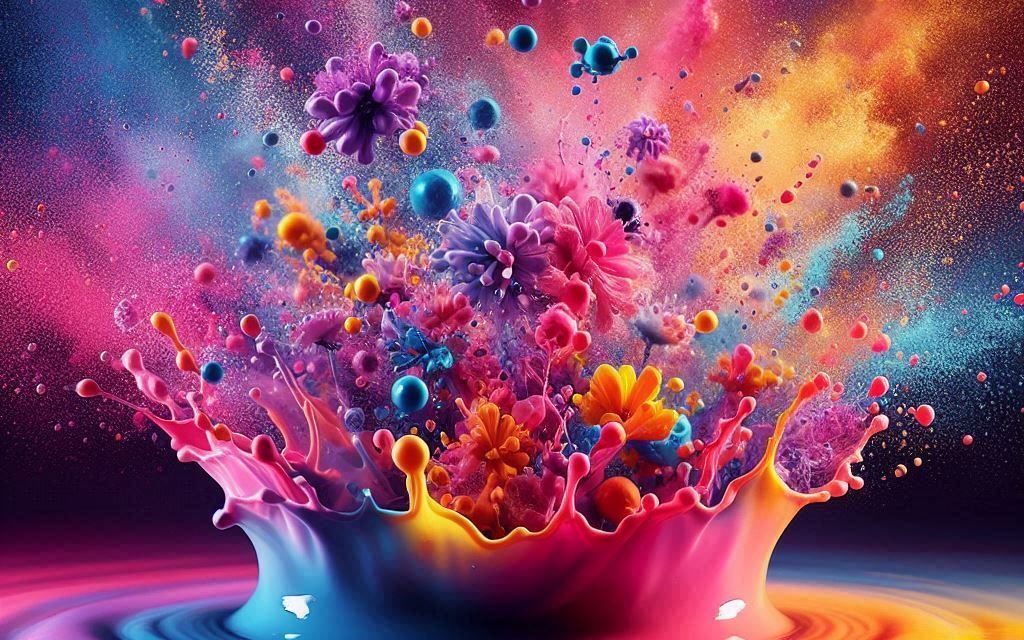Table of Contents
Marketing Your Visual Art Ideas: Bridging Creativity and Commerce
In the increasingly saturated world of visual art, it’s not enough for an artist to simply create; one must also master the art of marketing. Marketing is the bridge that connects the artist’s vision with an audience ready to appreciate and invest in that vision. What are the essential strategies for marketing visual art ideas effectively, focusing on the importance of personal branding, audience engagement, digital platforms, and the balance between commercial success and artistic integrity?

1. The Foundation: Personal Branding
At the core of marketing any visual art idea is the concept of personal branding. An artist’s brand is the embodiment of their identity, style, and the values they convey through their work. It is what differentiates one artist from another in a crowded marketplace. Developing a strong personal brand begins with a deep understanding of one’s unique artistic voice. This involves identifying the themes, mediums, and techniques that define the artist’s work and consistently incorporating them into all visual and communicative materials.
A successful personal brand should be reflected in all aspects of the artist’s public presence— from their portfolio and website design to their social media profiles and public interactions. Cohesiveness in branding helps build recognition and trust among audiences, making it easier for them to connect with the artist’s work on a personal level. For instance, an artist specializing in minimalist abstract paintings might choose a clean, modern aesthetic for their online presence, reinforcing the themes of simplicity and clarity present in their artwork.
2. Knowing and Engaging Your Audience
Understanding who your audience is and what they are looking for is crucial in marketing visual art. Artists should consider not only the demographics (age, location, income level) but also the psychographics (interests, values, attitudes) of their potential collectors and followers. By identifying the characteristics of their target audience, artists can tailor their marketing efforts to resonate more deeply with those most likely to appreciate and purchase their work.
Engagement is the next critical step. In today’s digital age, audience engagement goes beyond mere interaction; it involves creating a community around your art. Social media platforms such as Instagram, Facebook, and Twitter are powerful tools for this purpose, allowing artists to share their creative process, upcoming projects, and personal stories with their followers. By doing so, they can foster a sense of intimacy and loyalty among their audience, turning casual viewers into dedicated supporters.
Moreover, engagement should be a two-way street. Encouraging feedback, responding to comments, and participating in discussions not only help build relationships but also provide valuable insights into how the work is perceived and where there is room for growth.
3. The Power of Digital Platforms
The digital landscape offers unprecedented opportunities for artists to market their visual ideas to a global audience. Websites, social media, and online galleries have revolutionized how art is discovered and sold. An artist’s website is often the first point of contact for potential buyers and should therefore be both visually appealing and user-friendly. It should include a portfolio of works, an artist statement, a biography, and an online store if applicable.
Search Engine Optimization (SEO) is another key aspect of online marketing. By using relevant keywords, optimizing image descriptions, and regularly updating content, artists can improve their visibility on search engines like Google, making it easier for people to find their work.
Social media platforms, particularly those centered around visual content like Instagram and Pinterest, are invaluable for artists. They allow for direct interaction with audiences and provide a platform to showcase new work, behind-the-scenes processes, and exhibitions. Regularly posting high-quality images of artwork, using appropriate hashtags, and collaborating with influencers in the art world can significantly increase an artist’s reach and impact.
Online galleries and art marketplaces such as Saatchi Art, Etsy, and Artsy provide additional avenues for exposure and sales. These platforms not only broaden an artist’s market but also offer tools for marketing, analytics, and sometimes even pricing guidance.
4. Balancing Commercial Success with Artistic Integrity
One of the most challenging aspects of marketing visual art ideas is finding the balance between commercial success and maintaining artistic integrity. The pressure to sell can sometimes lead artists to create works that align more with market trends than with their own creative instincts. However, authenticity is key to building a lasting and meaningful brand.
Artists should strive to stay true to their vision while also being open to adapting their marketing strategies to meet the needs of the market. This might involve experimenting with different styles or mediums, exploring new themes that resonate with current events or cultural movements, or finding innovative ways to present and market their work without compromising its essence.
An essential part of this balance is setting clear goals—both artistic and commercial. By defining what success looks like, whether it’s selling a certain number of pieces, gaining gallery representation, or achieving critical acclaim, artists can create a roadmap that honors both their artistic and financial aspirations.
In essence…
Marketing visual art ideas requires a combination of creative expression and strategic thinking. By developing a strong personal brand, engaging with audiences, leveraging digital platforms, and balancing commercial goals with artistic integrity, artists can effectively market their work and achieve success in a competitive industry. Ultimately, successful marketing is about telling the story of the art and the artist in a way that resonates with the right audience, creating connections that turn admiration into investment.


No responses yet